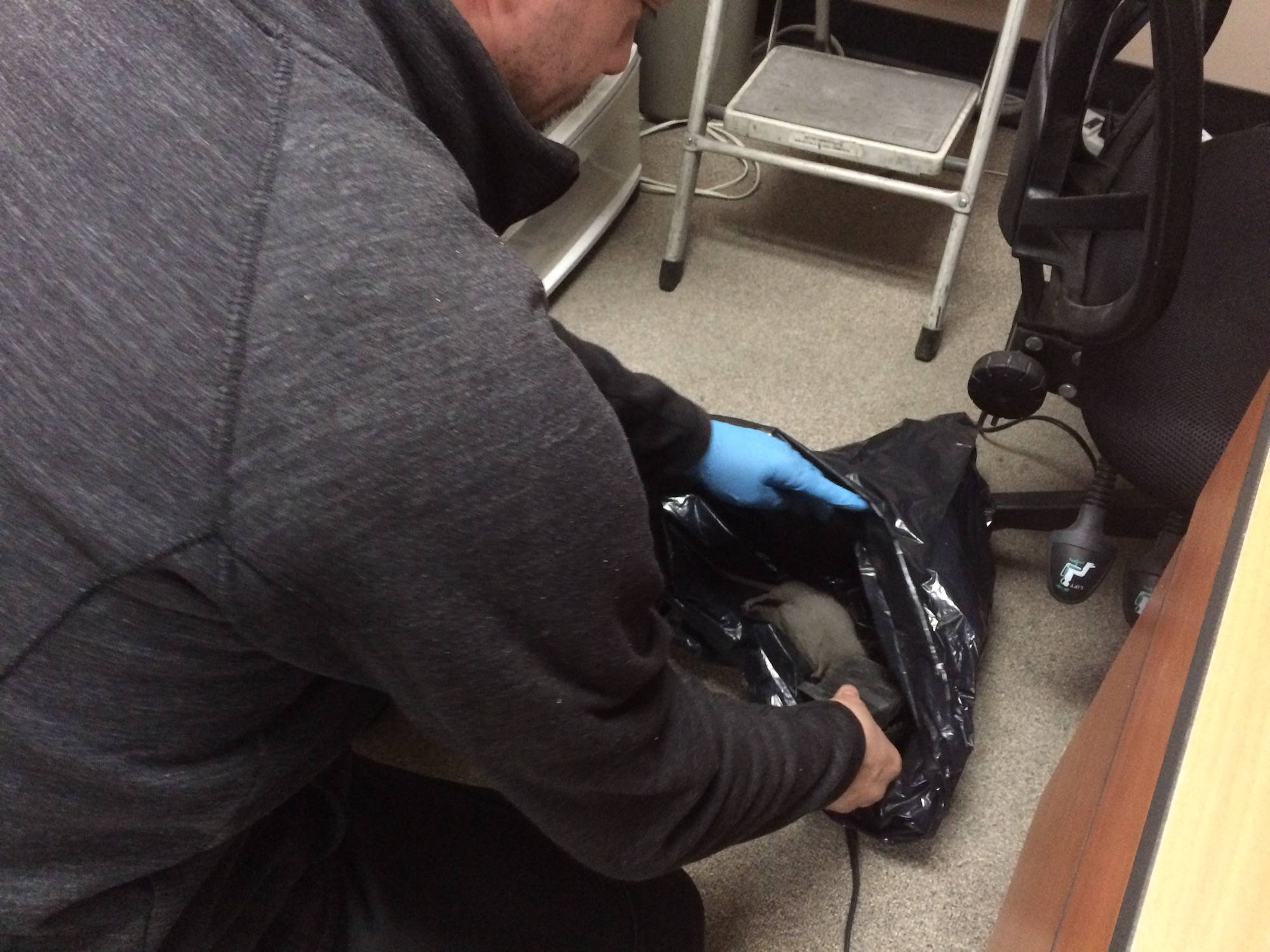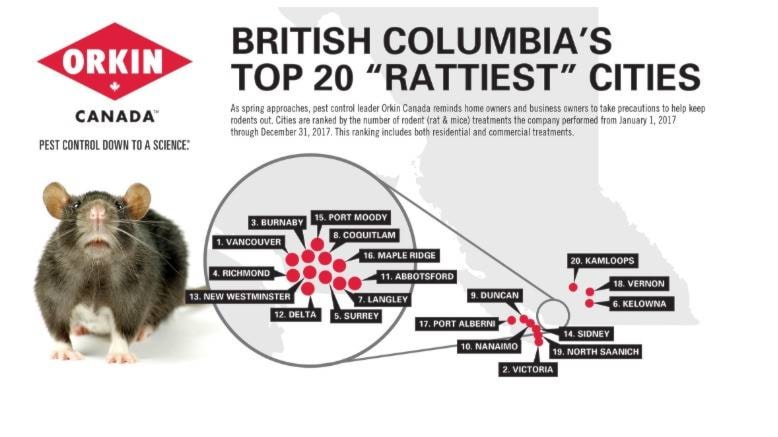If the many local complaints about rat invaders didn’t already tell you this city has a bit of a pest problem, there’s new evidence.
Kelowna has been named the sixth “rattiest” city in B.C. by Orkin, an extermination company that ranked the province’s Top 20 rat havens based on the number of treatments it performed in 2017.
Vancouver is first, followed by Victoria, Burnaby, Richmond, Surrey. In the Okanagan, the only other city to earn the dubious distinction of being in the Top 20 was Vernon, which is the 18th rattiest.
While it’s on individual property owners to deal with their rat issues, local governments have been working to help them do so.
At the Kelowna South-Central Association of Neighbourhoods the rat problem prompted a visit last year from Don Stolz, integrated pest management gardener with the Kelowna’s parks division, to explain to association members how to deal with them.
Stolz told the Kelowna Capital Newsthat rat sightings have become common in Kelowna’s Mission, downtown core, Glenmore and Rutland areas in the last three or four years.
“In the Raymer-Richter area where I live, I just caught one the other night. I have lived there for 23 years and I never saw any rats, not one, until just in the last three or four years,” Stolz said.
“My neighbour alerted me about it initially, and we talked about it among our other neighbours as to how we can collectively deal with the problem. It doesn’t matter if you take all the rat proofing precautions in your own yard if the neighbour is not doing the same thing.
“Rats don’t understand property lines. They go where they can find food, water and warmth. And they can really travel and cover a lot of ground.”
Stolz said reports from Toovey Heights residents of rats being spotted in various yards this winter was a surprise for him to hear, something which both he and long-time Toovey residents say has never occurred previously.
“They can fit into some amazing places. If they can get their nose, face and and an ear inside an opening, they will get through even if their body is twice the size of the hole. If you think a hole might be too small for them to fit through, think again,” Stolz said.
Frank Ritcey, provincial co-ordinator with WildSafe BC, tends to focus on bear, deer and coyote complaint issues, but the exploding rat population issue has gained the public’s interest.
“If you take all our education materials and substitute rat for bear, it pretty much amounts to the same thing in terms of wildlife proofing your property,” Ritcey said.
Recent: Penticton house a home to colony of rats
He said the reason rats are suddenly showing up in Interior communities is a bit of a mystery, one he says that Thompson Rivers University students have begun doing preliminary research on.
“They are able to get around by transferring themselves in or on trucks or other shipped goods from the Lower Mainland and if they find an urban setting, they can thrive,” he said.
“We have cameras along lots of trails in the region but we never see any rats. We see lots of other wildlife and rodents but never any rats. They don’t survive well in the wild.”
Nolan Newman, B.C. Interior and Yukon branch manager for Orkin Canada in Kelowna, thinks the rat outbreak in the Interior can be traced to a garbage strike in Vancouver more than a decade ago, where garbage was allowed to accumulate on the streets.
“After that strike, we began to see rats showing up in areas never seen before throughout the Okanagan, Kamloops, Salmon Arm, Creston, Cache Creek, Castlegar and Nelson,” Newman said, adding rats set up home in cars, semi-trucks and truck transport loads, essentially hitchhiking their way to Interior communities.
And if they arrive in your community unhindered, rats multiply quickly at a far greater level than even rabbits.
“Rats have a shorter gestation period. They become sexually mature very early in life, six weeks of age, and they can have a large litter of 10 to 12 babies at a time. Females can give birth to one batch of babies and at the same time be pregnant with the next batch,” Ritcey said.
To report a typo, email:
newstips@kelownacapnews.com.
@KelownaNewsKat
kmichaels@kelownacapnews.com
Like us on Facebook and follow us on Twitter.

